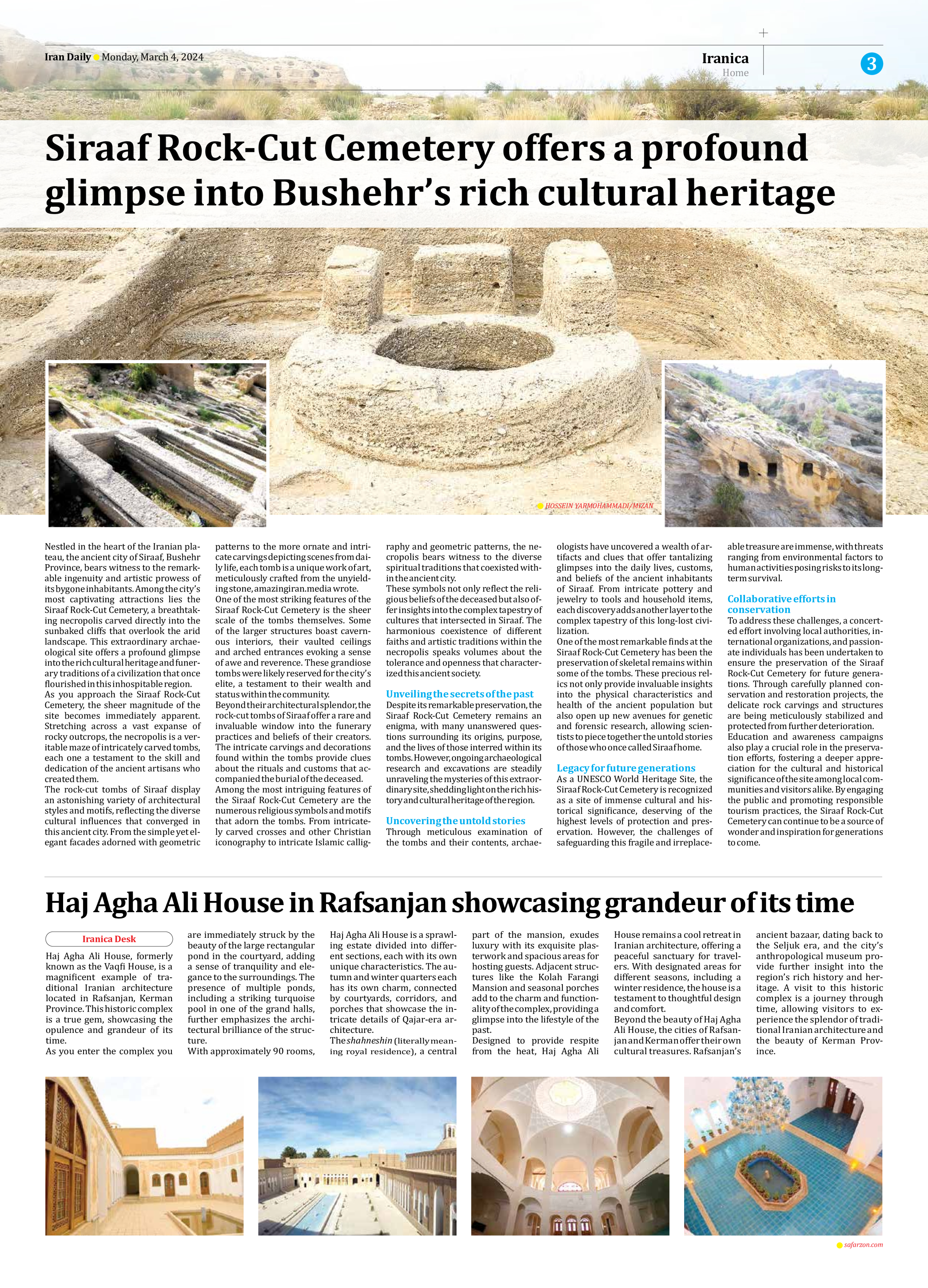
Haj Agha Ali House in Rafsanjan showcasing grandeur of its time
Haj Agha Ali House, formerly known as the Vaqfi House, is a magnificent example of traditional Iranian architecture located in Rafsanjan, Kerman Province. This historic complex is a true gem, showcasing the opulence and grandeur of its time.
As you enter the complex you are immediately struck by the beauty of the large rectangular pond in the courtyard, adding a sense of tranquility and elegance to the surroundings. The presence of multiple ponds, including a striking turquoise pool in one of the grand halls, further emphasizes the architectural brilliance of the structure.
With approximately 90 rooms, Haj Agha Ali House is a sprawling estate divided into different sections, each with its own unique characteristics. The autumn and winter quarters each has its own charm, connected by courtyards, corridors, and porches that showcase the intricate details of Qajar-era architecture.
The shahneshin (literally meaning royal residence), a central part of the mansion, exudes luxury with its exquisite plasterwork and spacious areas for hosting guests. Adjacent structures like the Kolah Farangi Mansion and seasonal porches add to the charm and functionality of the complex, providing a glimpse into the lifestyle of the past.
Designed to provide respite from the heat, Haj Agha Ali House remains a cool retreat in Iranian architecture, offering a peaceful sanctuary for travelers. With designated areas for different seasons, including a winter residence, the house is a testament to thoughtful design and comfort.
Beyond the beauty of Haj Agha Ali House, the cities of Rafsanjan and Kerman offer their own cultural treasures. Rafsanjan’s ancient bazaar, dating back to the Seljuk era, and the city’s anthropological museum provide further insight into the region’s rich history and heritage. A visit to this historic complex is a journey through time, allowing visitors to experience the splendor of traditional Iranian architecture and the beauty of Kerman Province.







